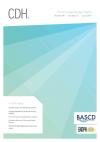Community Dental Health

- Cover Date:
- June 2017
- Print ISSN:
- 0265 539X
- Vol:
- 34
- Issue:
- 2
Productive efficiency and its determinants in the Community Dental Service in the north-west of England
Objectives: To assess the efficiency of service provision in the Community Dental Services and its determinants in the North-West of England. Setting and sample: 40 Community Dental Services sites operating across the North-West of England. Basic Research Design: A data envelopment analysis was undertaken of inputs (number of surgeries, hours worked by dental officers, therapists, hygienists and others) and outputs (treatments delivered, number of courses of treatment and patients seen) of the Community Dental Services to produce relative efficiency ratings by health authority. These were further analyzed in order to identify which inputs (determined within the Community Dental Services) or external factors outside the control of the Community Dental Services are associated with efficiency. Main outcome measure: Relative efficiency rankings in Community Dental Services production of dental healthcare. Results: Using the quantity of treatments delivered as the measure of output, on average the Community Dental Services in England is operating at a relative efficiency of 85% (95% confidence interval 77%- 99%) compared to the best performing services. Average efficiency is lower when courses of treatment and unique patients seen are used as output measures, 82% and 68% respectively. Neither the input mix nor the patient case
mix explained variations in the efficiency across Community Dental Services. Conclusions: Although large variations in performance exist across Community Dental Services, the data available was not able to explain these variations. A useful next step would be to undertake detailed case studies of several best and under-performing services to explore the factors that influence relative performance levels.
Key words: Dental auxiliaries, Economics, Mid-level provider, Efficiency, Production
doi:10.1922/CDH_4028Hill05
- Article Price
- £15.00
- Institution Article Price
- £
- Page Start
- 102
- Page End
- 106
- Authors
- Harry Hill, Stephen Birch, Martin Tickle, Ruth McDonald, Paul Brocklehurst
Articles from this issue
- Title
- Pg. Start
- Pg. End
- Communities in action: developing a dental ambassador training programme for adults with learning disability
- 77
- 79
- Public health intervention over four decades for the children in the Australian Capital Territory: Have we reached the point of diminishing returns?
- 84
- 87
- Relationship between mental health risk factors and oral symptoms in adolescents: Korea Youth Risk Behavior Webbased Survey, 2013
- 88
- 92
- PeP-SCOT a health coaching intervention for people in prisons: the development of the intervention protocol
- 97
- 101
- Productive efficiency and its determinants in the Community Dental Service in the north-west of England
- 102
- 106
- Socio-demographic and area-related factors associated with the prevalence of caries among preschool children in Greece.
- 112
- 117
- Dental caries experience, rather than toothbrushing, influences the incidence of dental caries in young Japanese adults
- 118
- 121
